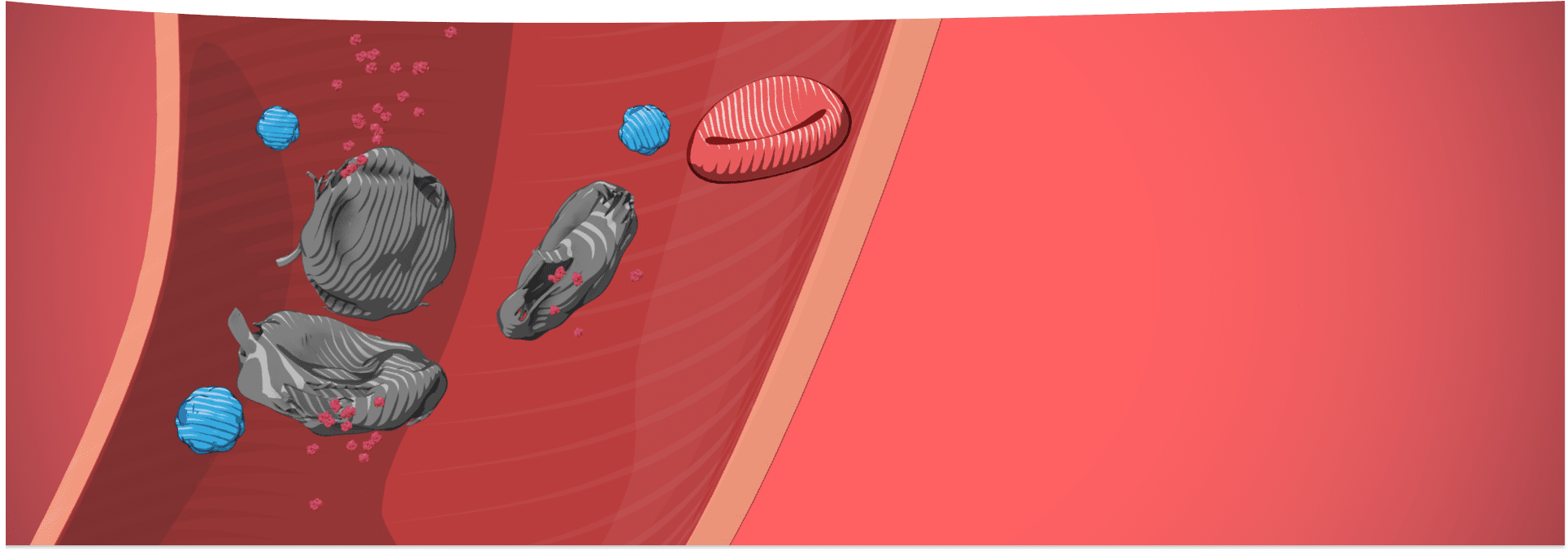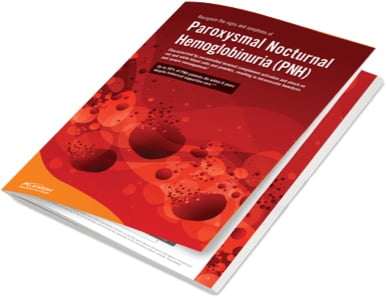Paroxysmal nocturnal hemoglobinuria (PNH)
PNH is a chronic, devastating, and potentially life-threatening disease characterized by uncontrolled terminal complement–mediated attack on red and white blood cells and platelets that can lead to severe consequences of thrombosis, organ damage, and early mortality.1
MORTALITY
Up to 35%
of patients with PNH die within 6 years despite historical supportive care.
aHistorical supportive care included blood transfusion, anticoagulation, immunosuppressive therapy, corticosteroids, and bone marrow transplantation.2,3
bRetrospective 6-year survival in historical control patients diagnosed with PNH between 1985 and 2005 in France (N=100). Retrospective thrombosis data presented are also from historical control group (N=44).3
cFive-year survival in patients diagnosed with PNH between 1997 and 2004 in Leeds, UK (N=30).2

Recognizing the signs and symptoms of PNH is critical4,5
Fatigue is one of the most recognizable symptoms of PNH. But PNH is much more than one symptom, and the ongoing hemolysis that characterizes this disease can have devastating consequences, including thrombosis.1,6,7

all the time?”*
*Actor portrayal. Each person’s experience with PNH may vary. Quotes are composites based on actual experiences of real people living with PNH.


PNH affects patients on multiple levels
Patients struggle with both the physical and mental toll of this disease.6

PNH Resources

Hear from a PNH expert,
Dr Anita Hill
Dr Hill explains what causes this rare disease, how part of your body’s own immune system plays a role, and certain complications to look out for.8-11.
- Sharma VR. Clin Adv Hematol Oncol. 2013;11(9)(suppl 13):2-8.
- Kelly RJ, et al. Blood. 2011;117(25):6786-6792.
- Loschi M, et al. Am J Hematol. 2016;91(4):366-370.
- Borowitz MJ, et al. Cytometry B Clin Cytom. 2010;78(4):211-230.
- Richards SJ, Barnett D. Clin Lab Med. 2007;27(3):577-590, vii.
- Schrezenmeier H, et al. Haematologica. 2014;99(5):922-929.
- Ueda Y, et al. Int J Hematol. 2018;107(6):656-665.
- Hill A, et al. Nat Rev Dis Primers. 2017;3:17028.
- Brodsky RA. Hematology: Basic Principles and Practice. 7th ed. Elsevier; 2018:415-424.
- Lee JW, et al. Int J Hematol. 2013;97(6):749-757.
- Schrezenmeier H, et al. Ann Hematol. 2020;99(7):1505-1514.

